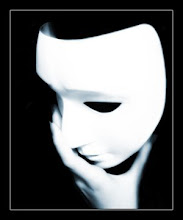Much greater than usual media attention accompanied the most recent World Psychedelic Forum held in March in Basel, Switzerland, the home of Albert Hofmann. A headline in the May issue of the staid British medical journal The Lancet -- known for challenging the Pentagon's Iraq casualty numbers -- read, "Research on Psychedelics Moves into the Mainstream."
The Lancet article identified a number of early-stage clinical trials being conducted on various "anxiety and neurotic disorders" using psychedelic compounds. As previously mentioned, Doblin and MAPS are conducting three parallel studies in Israel, Switzerland and the United States on the use of Ecstasy for treating PTSD. MAPS is also funding the work of controversial Harvard researcher John Halpern and his Yale counterpart Andrew Sewell, who are studying LSD and psilocybin as treatments for cluster headaches. (Information about their research is available on clusterbusters.com and Erowid, an online clearinghouse for reliable data on virtually every psychoactive plant and chemical known to humans.)
Harvard University, which conducted the last legal research on LSD in the mid-1960s and was the site for one of Halpern's studies on the effects of MDMA on dying cancer patients, is once again considering clinical trials to support Halpern's research.
And in a major milestone, on May 13 of this year, Swiss doctor Peter Gasser administered the first legal dose of LSD in more than 36 years. It was for a study of anxiety in palliative care, which helps terminally ill patients transition more peacefully -- and with as little pain as possible -- into death.
Other complexes like addiction and obsessive-compulsive disorder are being treated with what are called the "shamanic plant medicines": ayahuasca, the Amazonian vine preparation whose psychoactive component is dimethyltryptamine (DMT); peyote, the North American cactus whose psychoactive component is mescaline; and iboga, an African rainforest shrub.
Addiction is one of the most important new fields of study, not only because of the sheer numbers of afflicted, which the National Institute on Drug Abuse estimates at 23.6 million persons a year at a cost of $181 billion. According to a newly released report from the World Health Organization, the United States is the world's most addicted society. Of those who are lucky enough to get treatment, half eventually go back to heavy use, and 90 percent suffer brief or episodic relapses for the rest of their lives. This makes the search for an effective and long-lasting new treatment more attractive -- and more pressing -- than ever.
Jul 11, 2008
Psychedelics making a comeback as medical treatments
No, really.
Subscribe to:
Post Comments (Atom)
.jpg)

No comments:
Post a Comment